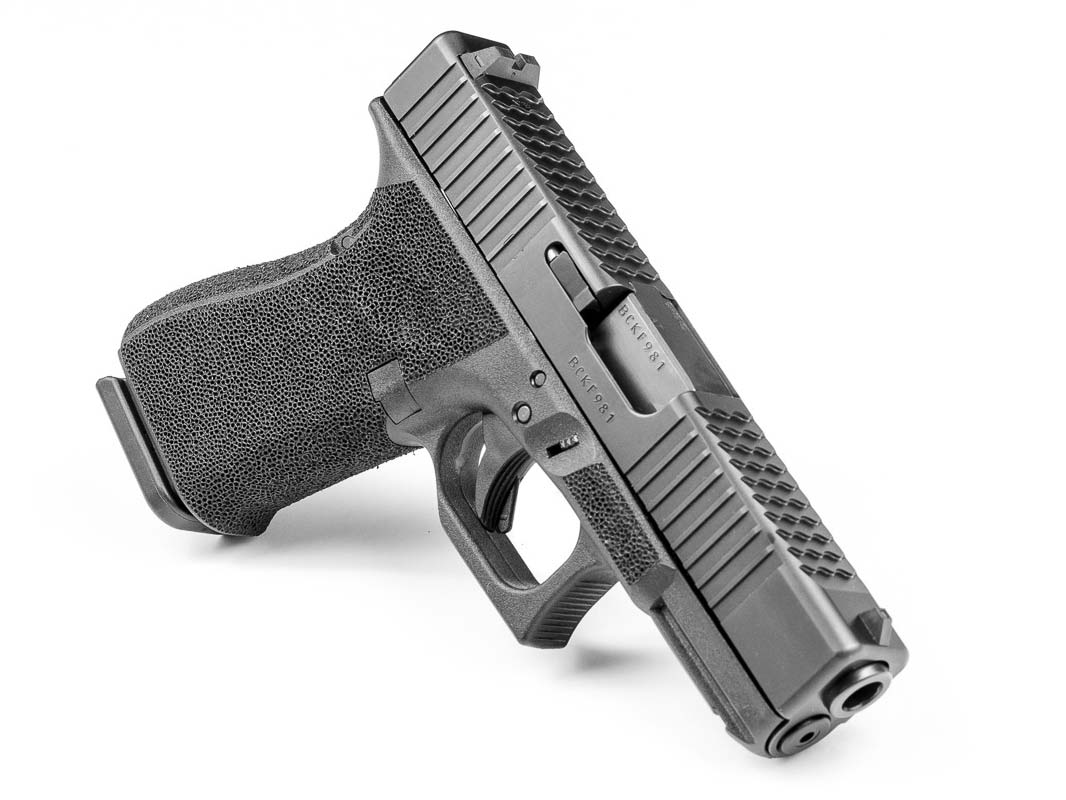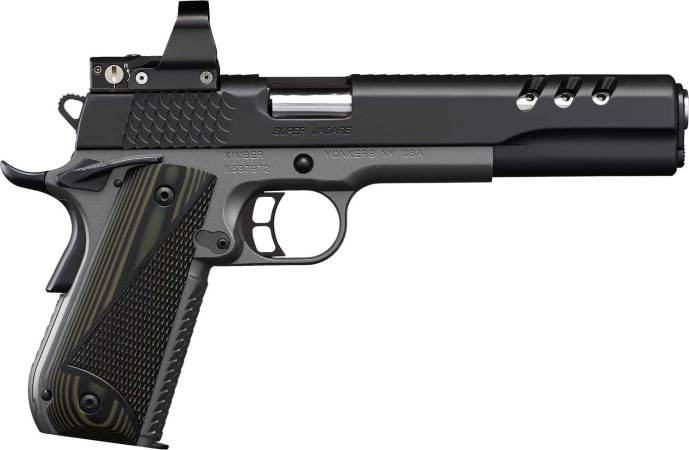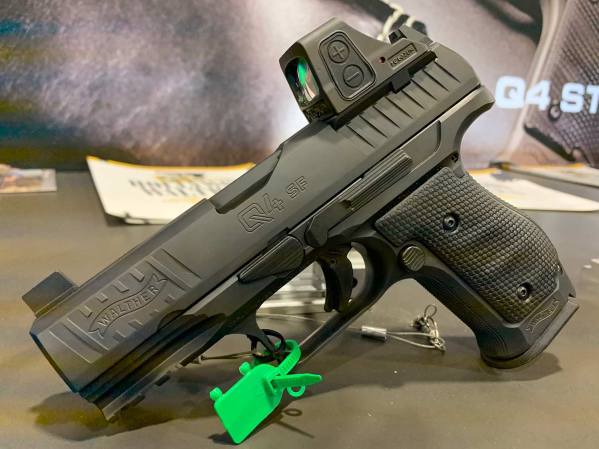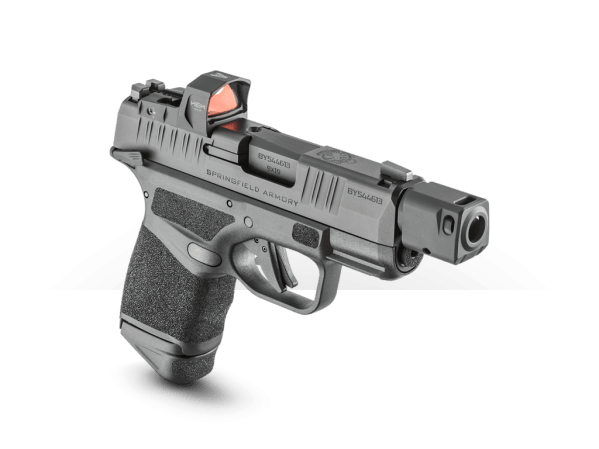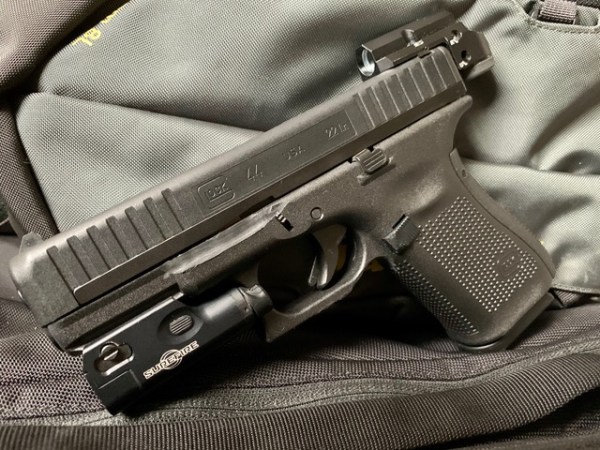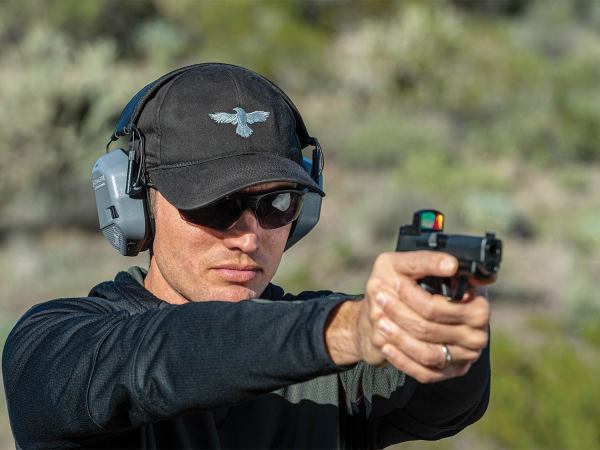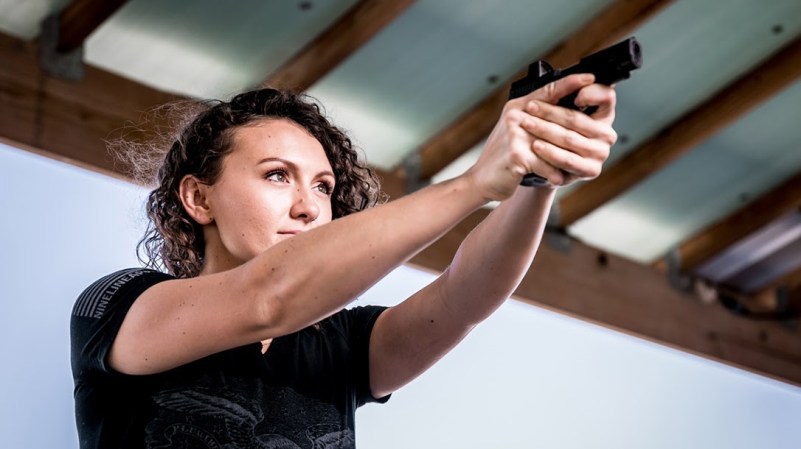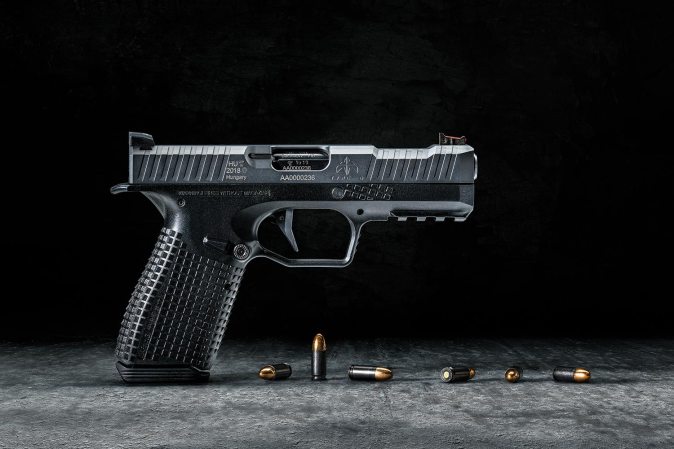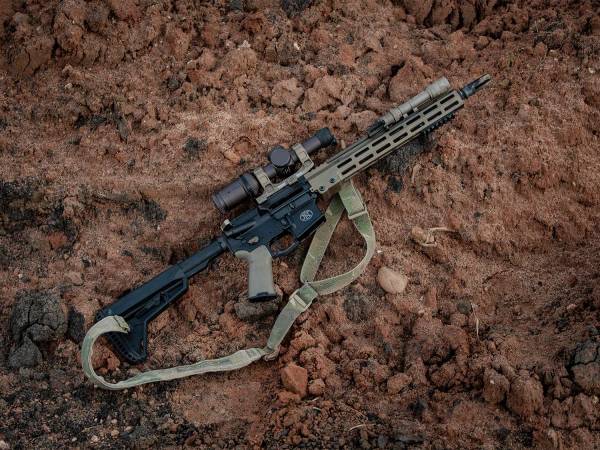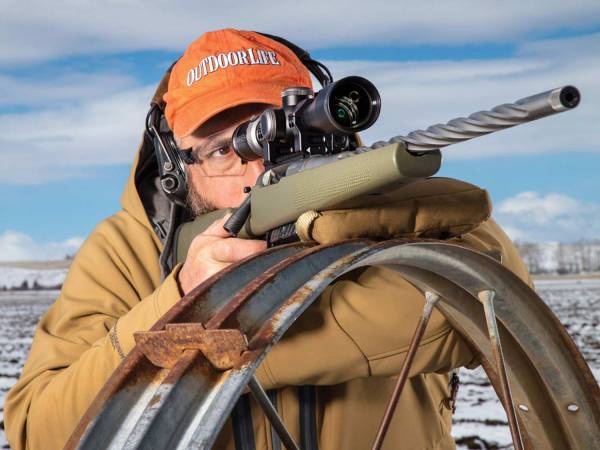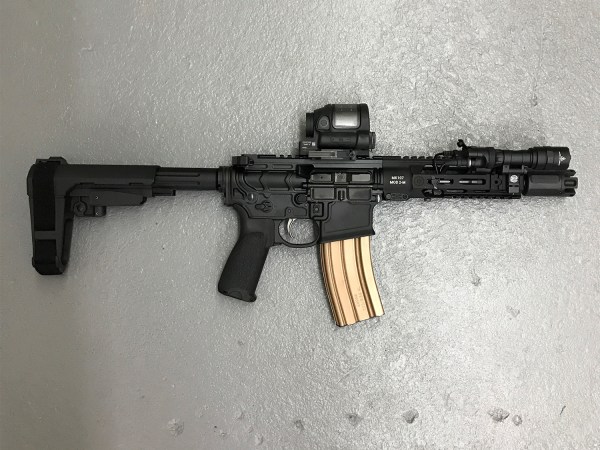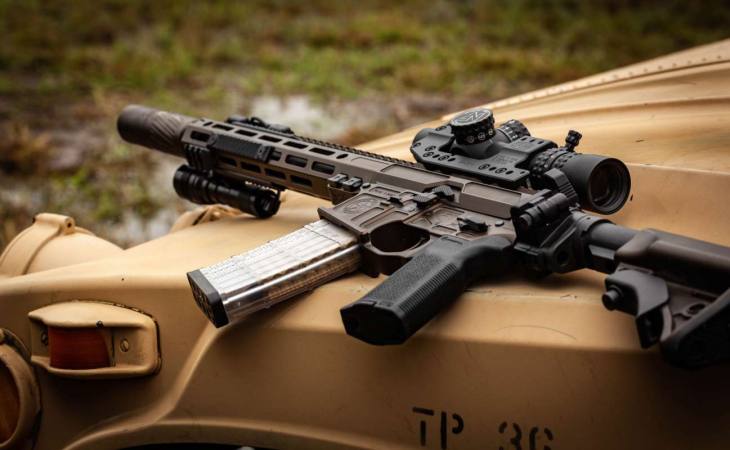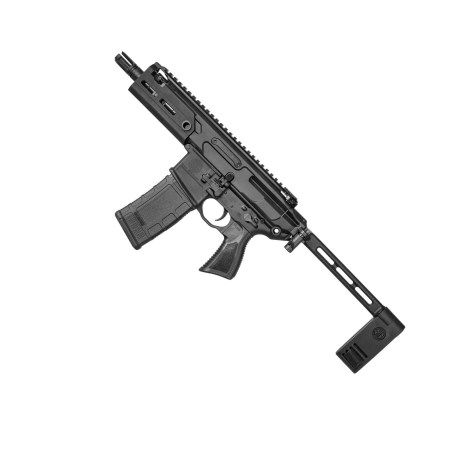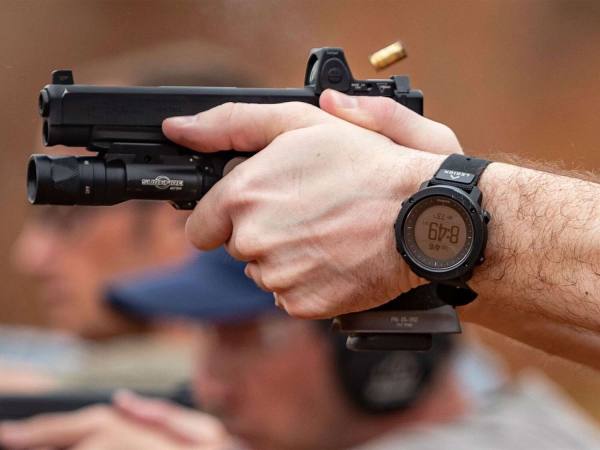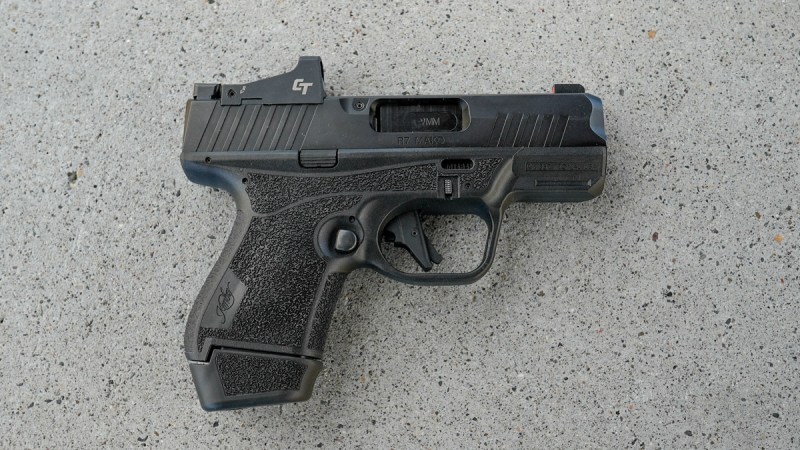We may earn revenue from the products available on this page and participate in affiliate programs. Learn More ›
In the last several years, I have thoroughly tested plenty of accessories and modifications designed to increase the performance of carry pistols. There are a litany of aftermarket upgrades you can make to a carry gun, but only a few actually enhance the capability (and lethality) or your firearm. If you’re looking to become more accurate, or simply want more from your sidearm, here are some of the best post production modification to consider.
1. Ammunition
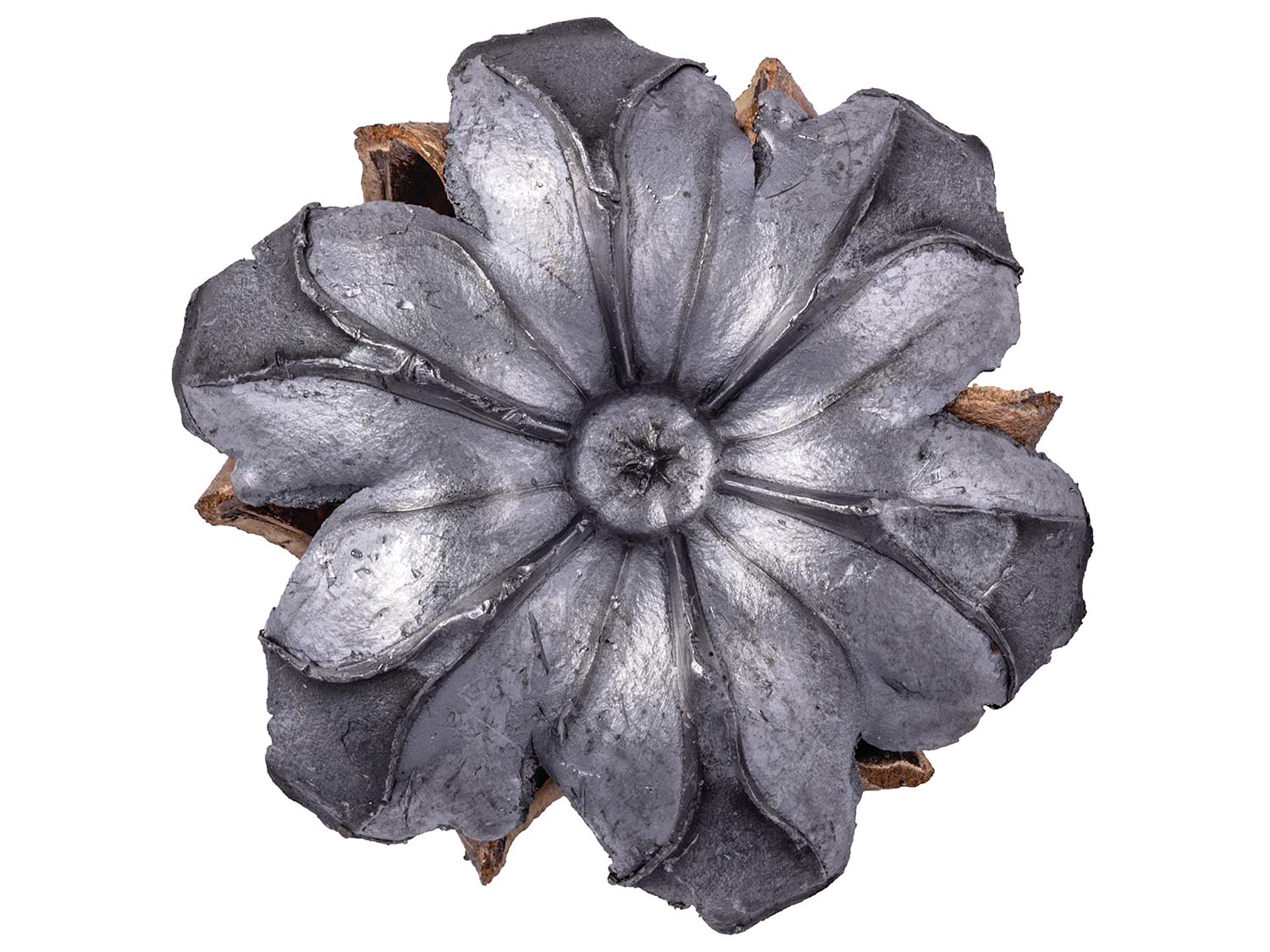
While not really an accessory, quality ammunition should top your list once you have selected a handgun. Plan to replace full metal jacket (FMJ) practice ammunition with a quality jacketed hollow-point (JHP) or fluted round as soon as practically possible. The components are made of premium quality, so the rounds will provide the appropriate level of expansion or fluid disbursement and controlled penetration depths.
Federal’s HST line is the duty load of choice by law enforcement officers throughout the world. It has a specifically-designed hollow point that won’t plug while passing through a variety of barriers, and the bullet jacket and core stay together to provide nearly 100 percent weight retention, even when shot through most intermediate barriers.
HST is incredibly accurate and produces the desired level of penetration for personal defense situations without over penetrating. The bullet nose profile, nickel-plated case, and high performance primer provide the ultimate in function and reliability in semi-automatic pistols and it is always my first choice in 9mm defensive loads.
Hornady’s Critical Duty round is loaded with their unique FlexLock bullet, delivering “barrier blind” performance when shot through common urban barriers. The FlexLock bullet incorporates two advanced features to deliver superior penetration and consistent performance in FBI tactical handgun ammunition tests (FBI Protocol). The patented Hornady Flex Tip design eliminates clogging and aids in bullet expansion. A large mechanical jacket-to-core InterLock band works to keep the bullet and core from separating for maximum weight retention, excellent expansion, consistent penetration and terminal performance through all FBI test barriers. This round is the current issue load for FBI agents.
2. Sights
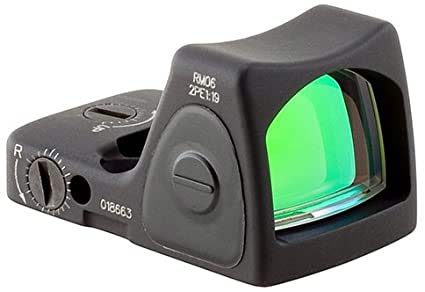
After sourcing quality ammunition, new iron sights are typically the first component to get replaced on a carry pistol, as the majority of factory sights leave much to be desired; they range from dovetail protectors to generally basic, no frills, three-dot steel sights. A wide array of aftermarket iron sight options are available, and you should choose a set that provides the largest jump in performance to both your speed and accuracy.
In addition to providing a more useable sight picture during varying conditions (and durability in some cases), the other reason for replacing factory sights with an aftermarket set is the ability to fine tune your zero and clean up your sight picture. Most iron sights can be drifted for windage adjustment (move the rear sight in the direction you want the bullet to go), but not elevation. That forces you to remember the point of aim/point of impact of each of the pistols you carry. From the factory, your pistol might require a 6 o’clock hold, dead hold, or 12 o’clock hold on the target. This isn’t something I would want to try and recall if forced to make a low probability shot, at distance. So ensure your gun is zeroed.
Trijicon HD Night Sights are my preferred carry sights. They are the the standard by which all others are judged, offering a precise sight picture and good low-light performance, since the front sight jumps out to the eye. Available in different heights, colors, and styles, the HD night sights are a self-luminous, three-dot night sight set that features a highly visible photo luminescent paint outline to quicken sight acquisition. A U-notch rear sight is angled and serrated to reduce glare and aid in front-sight focus.
When adding a red dot into the equation, you take away sight radius, so there is no accuracy benefit to having a pistol with a longer slide; which makes adding one to a compact carry pistol a no-brainer. When compared to a long slide pistol such as a Glock 34 or Government Model 1911, compact pistols like the Glock 19 or Smith & Wesson M&P Compact 2.0 are easier to shoot rapidly with a red-dot sight. If you have a good handle on recoil management, the red dot will never leave your field of view, making it far easier to track the dot during rapid fire.
My preferred red dot is Trijicon’s RMR RM06 Type 2, a manually adjustable, LED-powered sight with a 3.25-MOA. The controls are mounted on either side of the protective hood and are quick to adjust if needed. The RMR is machined out of a solid block of aluminum, and the hood of the sight is designed to transfer energy from a hard impact down the side of the hood walls into the base, minimizing the chance of cracking or dislodging the glass. The area between the emitter and the glass is stepped down to reduce glare. A myriad of power options, dot sizes, and colors are available.
3. Trigger
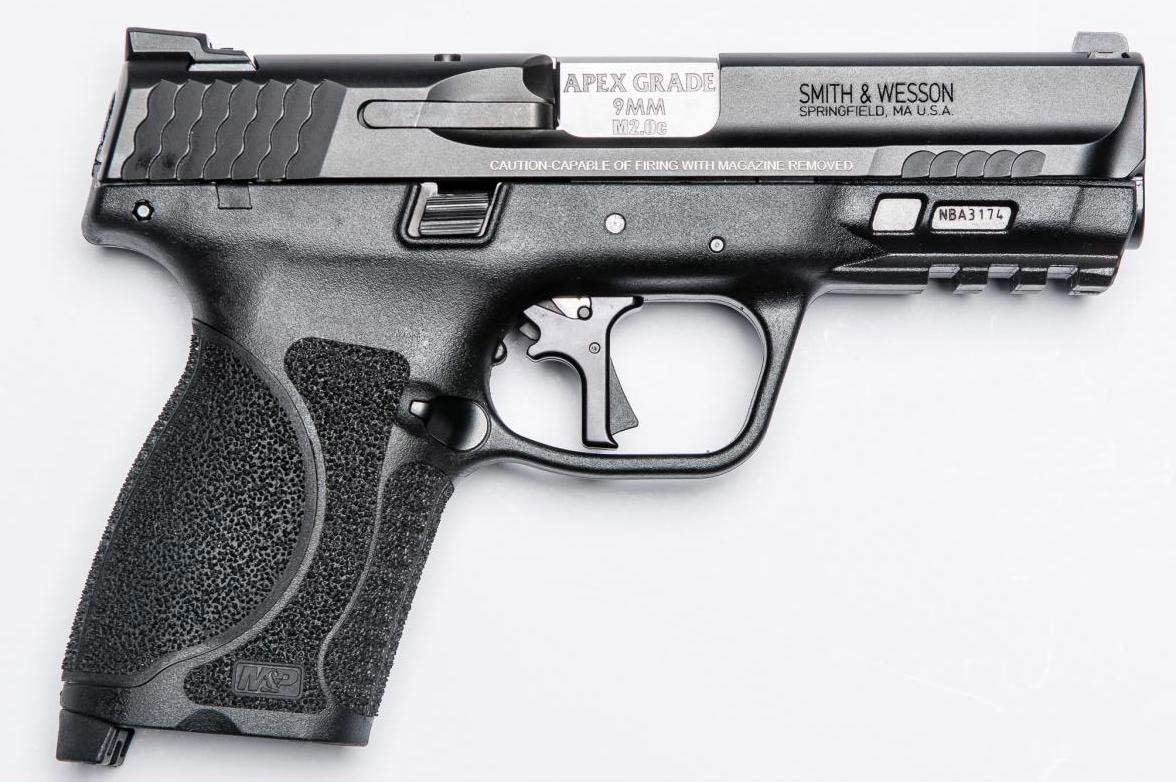
I am not a proponent of modifying factory triggers on carry pistols, especially Glock triggers. I’ve seen the vast majority of brands fail on the flat range, and very few untouched factory triggers have done the same. In some cases reliability trumps performance. If you’re bound and determined to lighten the trigger, you have a couple of options. The first is to shoot and dry fire your gun a lot. Not only is it great practice, but doing so causes the trigger parts to wear against each other, thereby smoothing the pull weight.
The next option is to replace your connector ($20 for a Glock), or polish the one you have with metal polish. While you’re in there, you might as well polish the other wear surfaces that affect the trigger pull. This can be done for a couple of dollars, a little elbow grease, and about 30 minutes of your time.
The last option is selecting a drop-in trigger from a reputable manufacturer. I highly recommend leaving the factory springs alone and only replacing the trigger bar, shoe, and connector. I’ve had good results with the ZEV Technologies PRO Flat Face Upgrade Bar Kit. Compared to a factory unit, the ZEV provides a smooth, light, reduced travel trigger pull that remains reliable after several thousand rounds fired.
If your carry pistol is from SIG Sauer, I recommend Grayguns. Choose one of their carry kits and you’ll be rewarded with a light, smooth trigger press. If your carry gun is from Smith & Wesson, I recommend one of Apex’s duty kits, which have a proven record of reliability.
4. Controls
Extended Slide Release: I tend to go back-and-forth on the necessity of an extended slide release, especially as it pertains to a dedicated concealed carry pistol. There is no denying the utility it brings to one-handed manipulations, which is typically why I recommend installing one. Realistically though, most pistols don’t need them, except for Glocks. In their case, I highly recommend the TangoDown Vickers slide stop, which retails for about $20.
Extended Mag Release: One of the primary reasons to add an extended magazine release to your carry pistol is hand size. If you have smaller hands, an extended release will be more forgiving and easier to manipulate. Careful not to go overboard with a carry pistol, however. A good test is that if you can place the pistol on a table, magazine release downward, and press on the gun, the button should not release the magazine. If it does, a little sandpaper can help reduce its profile. For Glock pistols, I highly recommend the TangoDown Vickers magazine catch, which retails for about $17 and is designed to pass this test.
5. Frame Modifications
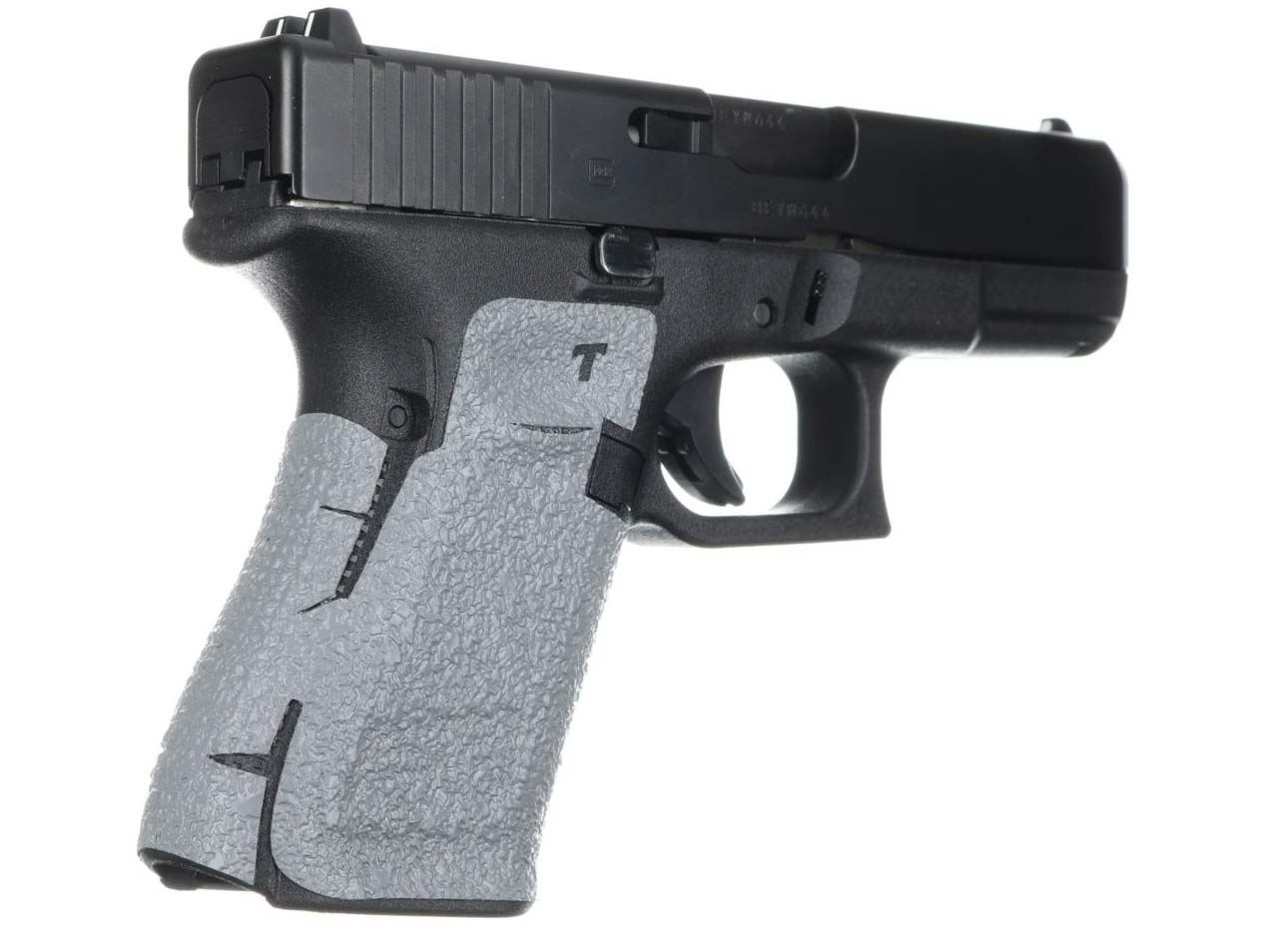
I look at my carry pistol as a tool. If a modification will better fit it to my hand and enhance that interface, I make it. We all have different sized mitts, grip strength, and expectations, so I’d encourage you to consider some or all of the following modifications.
Triggerguard Undercut: A deep undercut of the trigger guard allows for a nice, high firing-hand grip. These undercuts should be industry standard (and they’re slowly becoming so), as the closer your hands are to the bore, the greater control you will have over the pistol. This reduces felt recoil and allows you to better track your sights. If you are carrying a smaller pistol, but have larger hands, this modification will allow you to get more hand—and thereby a better, more consistent grip—on the gun.
Texture: The most useable grip texture is located on the front and backstrap of the pistol, where your firing hand has the greatest amount of pressure. One of the benefits of increased grip texture is it allows for a more consistent grip. Consistency is without a doubt one of the most important aspects of shooting a pistol well. How you grab your pistol and how it sits in your hand matters, and you don’t want to be re-gripping your pistol every couple of shots because it is sliding around in your hand.
With that said, I like a 360-degree stipple, or texture enhancement, as the grip is more apt to stick to my hand in less than optimal conditions, and at that point, I’ll take any advantage I can for improved grip consistency.
Talon Grips: If you’re not quite ready to take the plunge into permanently modifying the grip frame of your pistol, there is another option: Talon Grips. Talon offers a number of grip surfaces ranging from rubberized to sandpaper-like texture. The pattern is gun and model specific; each is laser cut and are adhesive-backed. Simply clean the grip frame of your pistol with an alcohol swab, expose the adhesive backer and carefully apply it to your grip. Talon Grips are relatively affordable and are easy to replace should they wear out. My experience is that if the tape is properly prepped and installed carefully, it will stay in place for many years of regular use.
Index points: The areas forward of most takedown levers serve as a place to rest your support hand thumb and can act as a gas pedal. The harder you press downward, the faster you can shoot. Texture on the opposite side can act as an index point for your trigger finger when not firing the pistol.
6. Slide Mods
Forward Slide Serrations: Aside from having your slide milled to accept a miniature red-dot sight, another reason to have metal work done to your slide is to enhance slide serrations, or create new ones. Based on pure performance, I’ve had very good experiences with a company called ATEi. ATEi’s top serrations are a unidirectional set of curving edges machined into the top of the slide. Single-hand manipulations are improved with or without gloved hands and bite into virtually any available surface or edge to rack the slide, all important considerations in a carry pistol.
“Sure, you can use your notched rear sight because it always works on a sunny 80-degree day. But, if you’ve fallen and broken your wrist, you’ve been shot in the hand, you’re holding your 2-year-old child or the bad guy back by the neck — you’re in a gunfight for your life and now your gun just stopped working. You might be able to hit that small spot on another small spot to operate the slide and fix a malfunction, or you might not,” says Doug Holloway, owner of ATEi.
Enhanced Rear Serrations: ATEi changes the geometry of the rear serrations by deepening them and cleaning up the bottom. Each valley is wider and each peak narrower, allowing more meat to get between serrations. Narrower peaks grip your skin better. Forward slide serrations match the enhanced rears and have been spec’d to assist the shooter in press-checking their pistol without getting their hand too close to the muzzle. The combination of these modifications enable the shooter to safely, effectively, and efficiently rack the slide of their pistol, even in the worst situations.
Optic Cut: When ATEi fits a Trijicon RMR to a pistol slide, they mount the sight as low as possible, about .125-inch deep. When using suppressor-height sights from AmeriGlo, the sight picture is visible in the lower third of the window of the RMR, with the dot sitting on the blade of the front sight. This provides a familiar sight picture when presenting the pistol, and is a seamless transition should you experience failure of the electronic sight. For users of the Roland Special, ATEi mills the RMR in front of the factory rear sight dovetail. This protects the RMR from rear impacts and maintains the factory sight radius. If the sight experiences complications, you’re right back to where you started with factory iron sight placement.
ATEi individually fits each RMR to the host slide for a perfect fit. Screws with a larger diameter and a finer thread pitch are utilized and do not require a thread locker, unlike the screws Trijicon provides. Full-size sight bosses are also machined into the slide—the more locating points, the better.
Read Next: 5 Great Mid-Sized Handguns for Concealed Carry and Self Defense
7. Match Barrel
The only time I think it is appropriate to add a match barrel to your carry pistol is if you’re capable of outshooting its mechanical accuracy. This is most often the case with third-generation or earlier Glock pistols and early Smith & Wesson M&Ps. If that’s the case, the match barrel that has proven the most reliable, while also providing the greatest jump in performance is from KKM Precision.
KKM’s barrels lock up tighter and increase accuracy by approximately 30 percent over a stock Glock barrel with no decrease in reliability. In my experience, I typically see five-shot group sizes shrink to around 1½-inches at 25 yards with full-power duty ammunition. The side benefit of the addition of a KKM barrel is that it also allows the owner to practice with lead projectiles without fear of damaging the factory Glock polygonal barrel.
8. Mag Wells
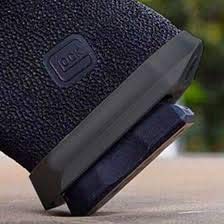
I’m not a huge proponent of adding a magazine funnel to a carry gun because most of them will create a high point and make the gun print. Most of the low-profile magazine wells do not offer enough of a performance upgrade to offset their cost. One example of an appropriate low-profile/carry magwell is a model that has a lip that protrudes on the front strap area to help lock the firing-hand in place on a compact carry gun. A good example of this is Agency Arms’ magwell for a Glock 19.
The Agency Arms magwell was designed specifically for duty or everyday carry and is machined from 6061 aluminum and type 3 hard coat anodized. It offers a streamlined design that positions the hand higher up beneath the triggerguard and offers a small funnel to aid in reloads.
Another product, specifically for Glock pistols worthy of adding would be a grip plug, which seals off the channel up the backstrap that leads to sensitive trigger components. Due to its shape and design, a grip plug also aides in the smoothness of reloads, as the rim of a cartridge case is less likely to snag on the rear of the magazine well.
9. Lights
One of my favorite compact pistol weapon lights is SureFire’s XC1-B. Designed for compact concealed carry pistols such as the popular Glock 19 and SIG’s P320 Carry, the XC1-B produces 350 lumens of light for 1.5 hours and runs off a single AAA battery. The light fits flush with the end of muzzle, and is no wider than the width of the frame. Because of its small size, I can’t think of a reason not to add one to your everyday carry pistol.
If you’re regularly out and about after dark, adding a higher-output white light to your carry pistol is a no-brainer. I trust SureFire’s X300 Ultra pistol light, which mounts to your pistols universal rail molded into its dustcover. The X300U is currently available in two models, A and B variations. The A model features a plastic rail-grabber mount, while the B model attaches with a metal T-slot mount. Each light produces 1,000 lumens of high intensity white light.
The X300U allows ambitious activation and runs off of two common CR123 lithium batteries for 1.75 hours. The beam shape provides an intense center hot spot that will fully illuminate targets out beyond 75 yards. The X300U offers very useable “spill” which is the corona of light that surrounds the center hotspot that essentially provides additional peripheral light to illuminate areas around your target.
